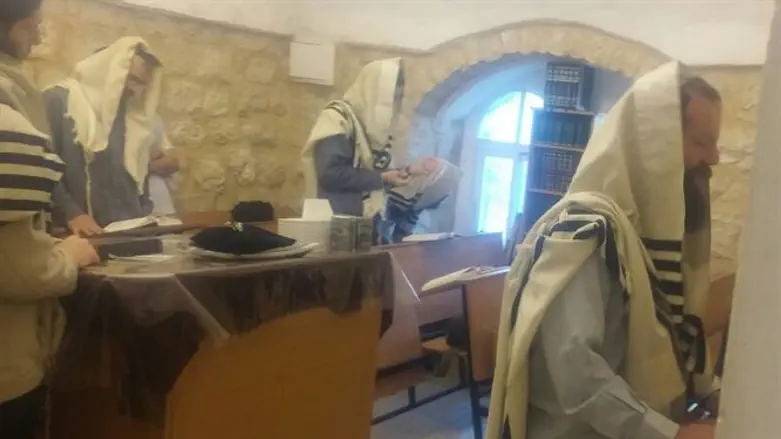
In honor of the 50th anniversary of Jerusalem's unification, Arutz Sheva presents a special project together with the Ateret Kohanim organization focusing on the new Jewish communities in East Jerusalem, the Old City and the Shiloach village.
The present article will focus on the rejuvenated synagogue in the Yemenite village. During the first year after the Yemenites first immigrated to the land of Israel in 1882, they lived in caves, huts and temporary structures near Jaffa Gate. During that year a fund was set up to establish houses for them in the Shiloah village near the City of David.
A room for prayer was the first structure which the immigrants built. In 1886 more houses were finished including three rooms which were later consecrated as a synagogue. The synagogue which was under three domes was called the "Great Synagogue."
The synagogue was the cultural and spiritual center of the Jewish community. It was very simple and did not have external decorations. The entire furniture consisted of a simple ark for the Torah scrolls and a smaller table for placing the Torah scrolls when they were read.
During the 1929 riots the inhabitants of the Shiloach left their houses. They placed all of their belongings in the synagogue and placed a guard there.
After the riots only 30 out of 144 families returned to their houses. During the 1938 riots the British expelled all of the Jews from their houses in the Shiloach. The houses and synagogue were abandoned and the community left a guard to watch their property, but in a visit made by Jewish leaders the following year, they found the synagogue open and desecrated with torn prayer books, a torn Torah scroll with excrement on it and ruin and destruction everywhere.
Today the synagogue serves once again as the center of the Shiloach Jewish community and once again the voice of Troah and prayer can be heard in the original synagogue built 130 years ago by the Yemenite immigrants.
The northern part of the synagogue serves the residents of the Shiloach daily but the southern part requires a proper renovation in order to extend the area of prayer and serve once again as a spiritual center perpetuating the memory of the Yemenite Jews who founded it.